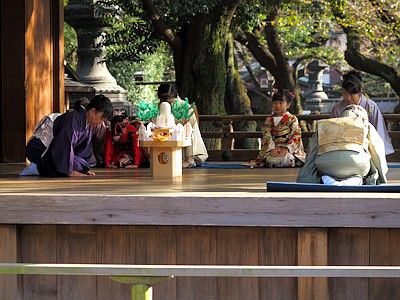Yasukuni Jinja Shrine
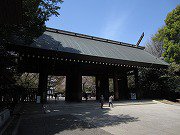 Yasukuni Jinja (靖国神社) is a Shinto shrine which enshrines total of nearly 24.7 million war dead, most of them samurai and soldiers, who sacrificed their lives for the nation, from around the Meiji Restoration to the end of the Second World War.
Yasukuni Jinja (靖国神社) is a Shinto shrine which enshrines total of nearly 24.7 million war dead, most of them samurai and soldiers, who sacrificed their lives for the nation, from around the Meiji Restoration to the end of the Second World War.
It is the second largest shrine in Tokyo, and though it's located in the heart of Tokyo it was miraculously able to avoid getting bombard in the war and thus conserves a shrine complex built before the war.
It's a 3-minute walk from Kudanshita Station of the Tokyo Metro Tozai Line & Hanzomon Line or the Toei Shinjuku Line.

This lantern stands across the street from the shrine but belongs to the shrine. When this was erected in 1871, the shrine's precincts were in somewhat Western-style (except for core components, of course.) It is said that this lantern could be seen from the sea in those days.

The first Torii Gate is 25 meters (82 feet) high. It was reconstructed in 1974 and is made of weathering steel.
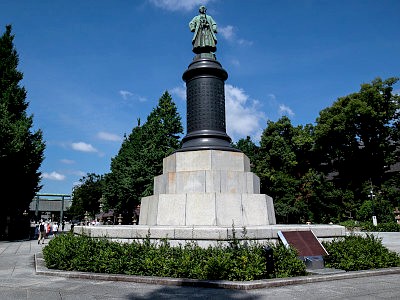
Omura Masujiro (1824-69) is the founding father of the Imperial Japanese Army.
This statue, erected in 1893, is the first bronze statue created with the Western method in Japan (which means that it's made in a different way from those of Buddhist divinities.)
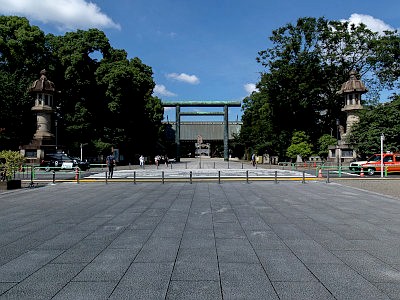
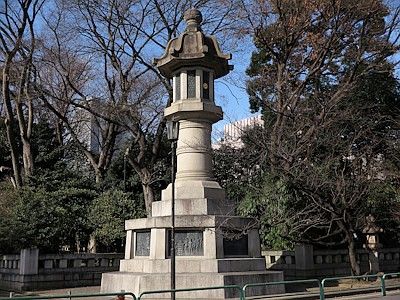
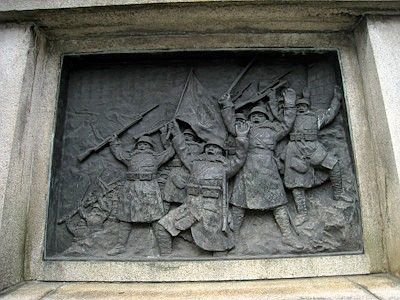
There stand two huge stone lanterns which are 12.4 meters (40.7 feet) high. Erected in 1935, each of them displays eight bronze plates, one set depicting the Imperial Navy and the other the Imperial Army.
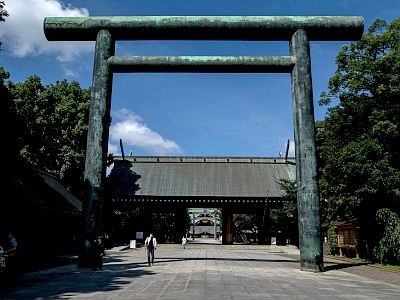
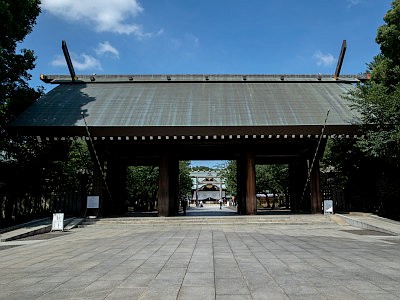
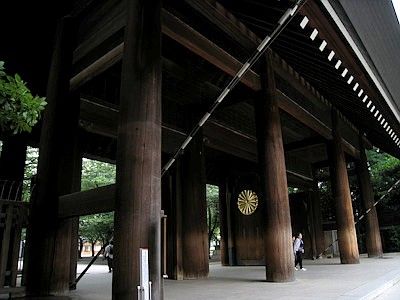
The Shinmon Gate was constructed in 1934 by Ito Chuta, an architect famous in Japan.
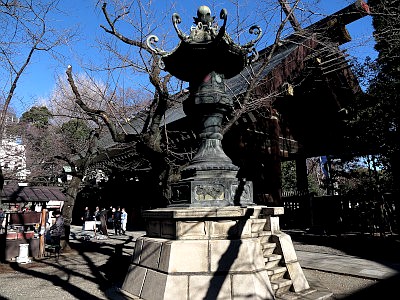
There are two unusually-shaped bronze lanterns, created in 1879, behind the Shinmon Gate.
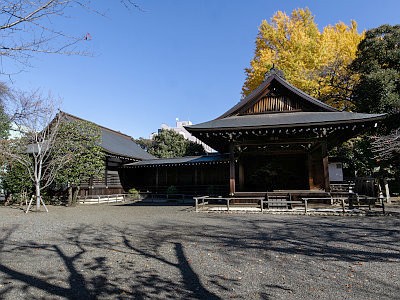
Noh-gakudo is an open-air theater where music, dance, and martial arts demonstrations are performed during festivals. It was initially created in 1880 near Zojoji Temple to perform noh but was relocated here.
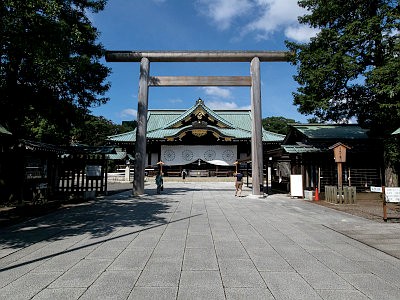

Haiden is the building in front of which ordinary people offer prayers. It was completed in 1901.
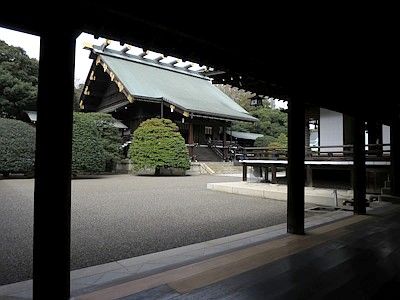
Honden, situated behind Haiden, is the very main building where divinities are enshrined. It was constructed in 1872. You can get a glimpse of it from behind the surrounding walls.
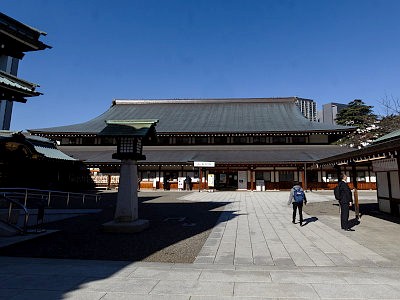
Sanshuden is the guest house. This one is pretty new.
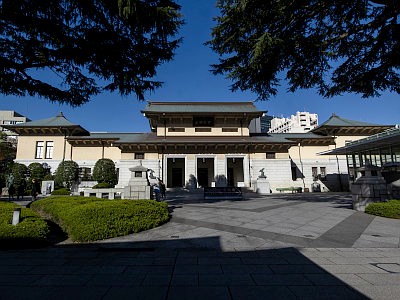
Yushukan is a museum founded in 1882 (present building constructed in 1931) exhibiting war-related artifacts and documents. Taking photos is prohibited except for the entrance hall.
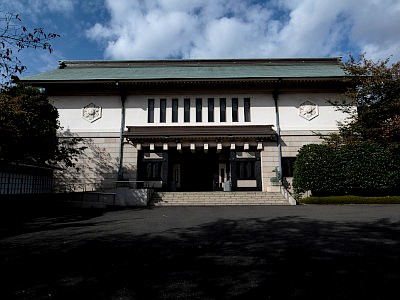
Yasukuni Kaikan, now used as a rest house, was built in 1934 as the annex of the Yushukan Museum.
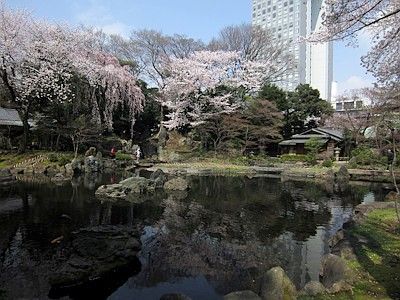
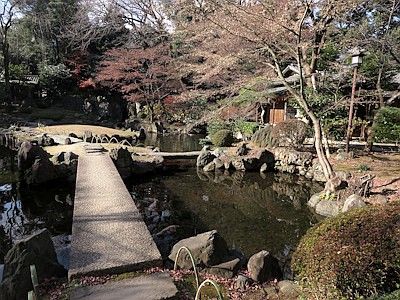
Shin'ike Garden is a small Japanese garden created in the late 19th century. Three tea houses are placed around it.
Notable Rituals & Events
Hatsumoude
Early January
Hatsumoude (初詣), conducted mainly in the first three days of the New Year, is a very popular ritual in Japan. In this event, people visit Shinto shrines and major Buddhist temples to offer their first prayers of the year.
Yasukuni Shrine attracts more than 200 thousand visitors in this period. Dances and martial arts demonstrations are also performed, and of them, a kind of traditional archery (Sansankutebasami-shiki) which takes place on Jan 3 is especially noteworthy. See the article on Hatsumode at Yasukuni Shrine for details.



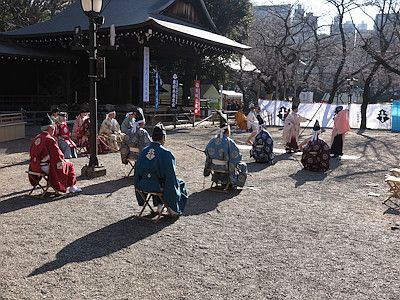
Sakura Matsuri
Yasukuni Shrine is famous for its sakura (cherry) blossoms, which bloom from around late March to early April. The way these flowers bloom beautifully and then fall gracefully at once in a short period of time was favored by the Imperial Military who thought it symbolized their destiny.
During this period, the Sakura Matsuri (さくらまつり) will be held at Yasukuni Shrine and at adjoining Chidorigafuchi Moat of former Edo Castle. See the article on the Chiyoda no Sakura Matsuri for details.


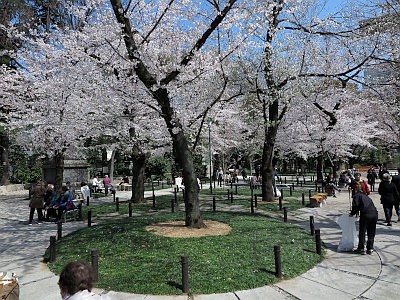
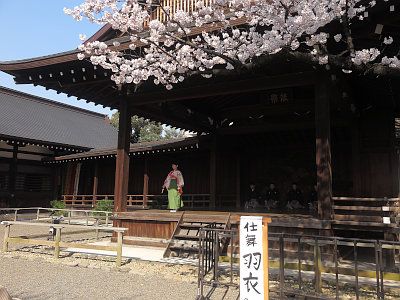
Hono Ozumo
Early April
Professional sumo wrestlers including Yokozuna devote their bouts to the divinities of the shrine. You can see them without admission. See the article on the Hono Ozumo at Yasukuni Shrine for details.



Shunki Reitaisai
Apr 21-23
The Reitaisai (例大祭), or the Grand Festival, is held biannually at this shrine. These are the most important ceremonies for the shrine. In these periods, envoys from the emperor dedicate offerings to deities enshrined at the shrine. Votive traditional music, dances and what not are also performed on the Noh stage every day. See the article on the Shunki Reitaisai at Yasukuni Shrine for details.


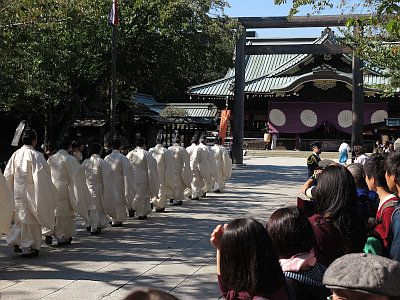
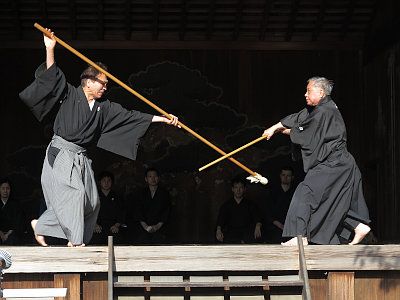
Mitama Matsuri
July 13-16
The Mitama Matsuri (みたままつり), literally meaning "soul festival", was founded in 1947 based on Japanese traditional ancestral worship, which is now mainly integrated into the Buddhist ceremony Bon. After 6PM more than 30,000 lanterns are lit and 3 million people gather.
See the article on the Mitama Matsuri at Yasukuni Shrine for details.


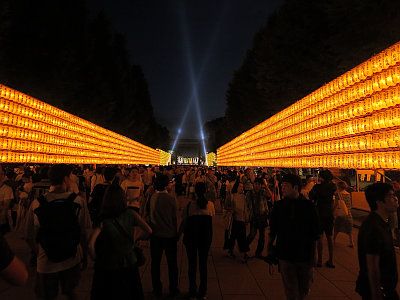
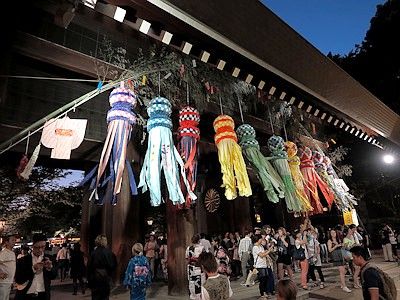
Aug 15, The day WWII ended
The 15th of August is recognized in Japan as the day WWII came to an end. Japan accepted the Potsdam Declaration and surrendered on August 14th of 1945 but it was not announced to the public until the following day so the 15th is widely regarded as the very day in Japan. The surrender documents themselves were signed on the 2nd of September, so many other countries regard this date as the one the Second World War ended.
Though there takes place only a small official ceremony at this shrine on this day - just releasing white doves - which doesn't even make it to the official list of ceremonies in its English website, many people come to offer prayers this day. Every year political right and left exchange their allegations on whether the prime minister should come and offer prayers or not on the media.
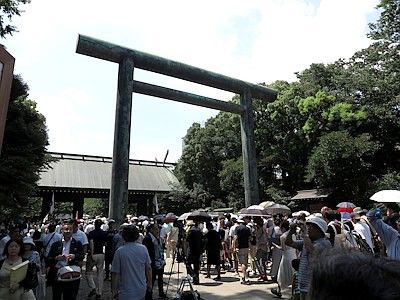
Kusaji-shiki
The Kusaji-shiki (草鹿式) is an archery ceremony performed in traditional outfits on the second Monday of October. See the article on the Kusaji-shiki for details.


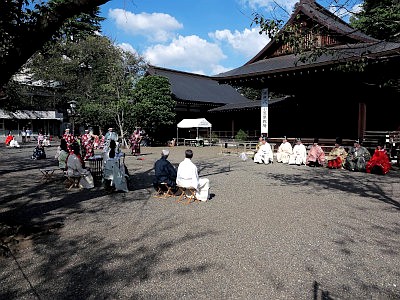
Shuuki Reitaisai
Oct 17-10
The Shuuki Reitaisai (秋季例大祭), or the Autumn Grand Festival, is held from Oct 17 to 20. At this festival, envoys from the emperor dedicate offerings to deities enshrined. Traditional music, dances and what not are also performed on the Noh stage every day. See the article on the Shuuki Reitaisai for details.



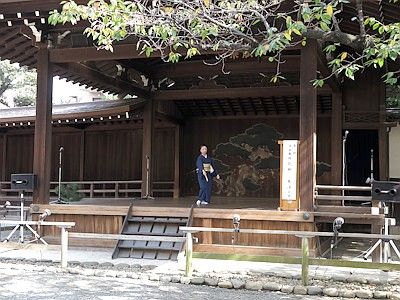
Shichigosan-no-gi
In November, a formal way of Shichigosan will be performed. Shichigosan is a ritual for children aged three, five, or seven conducted around November. It's usually conducted in a simplified way when ordinary people go through this event, but the formal way of doing this is demonstrated at this shrine in early November. See the article on the Shichigosan-no-gi for details.


